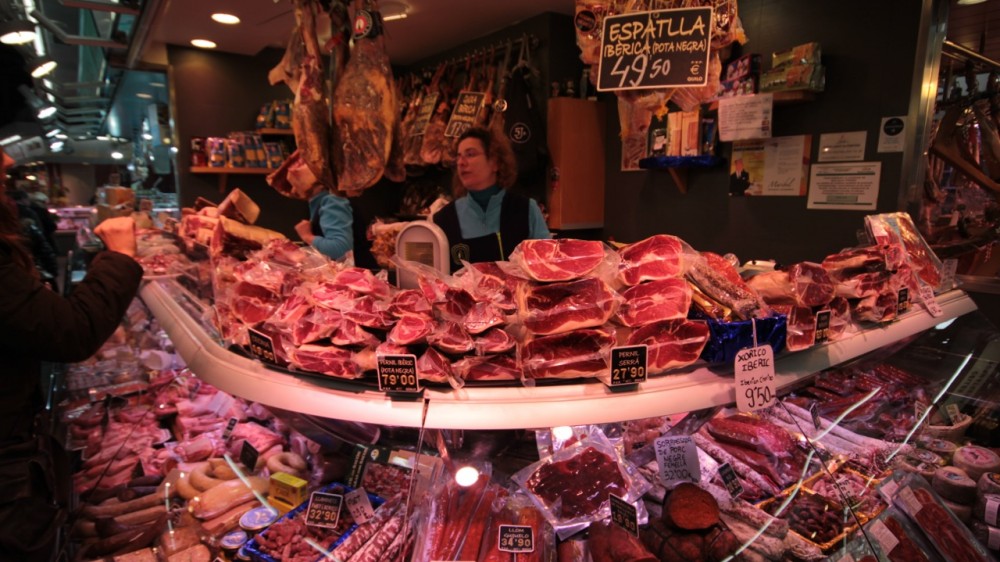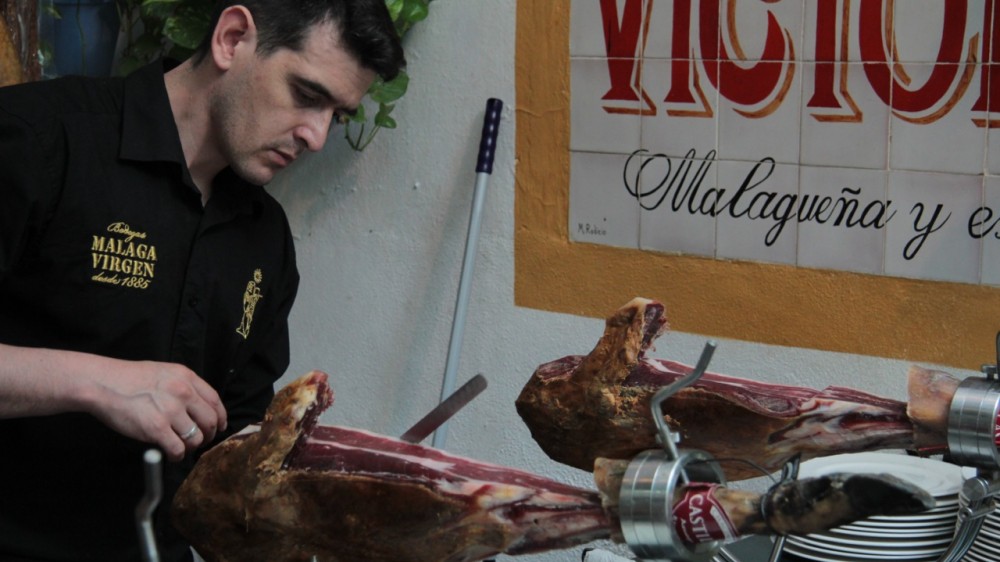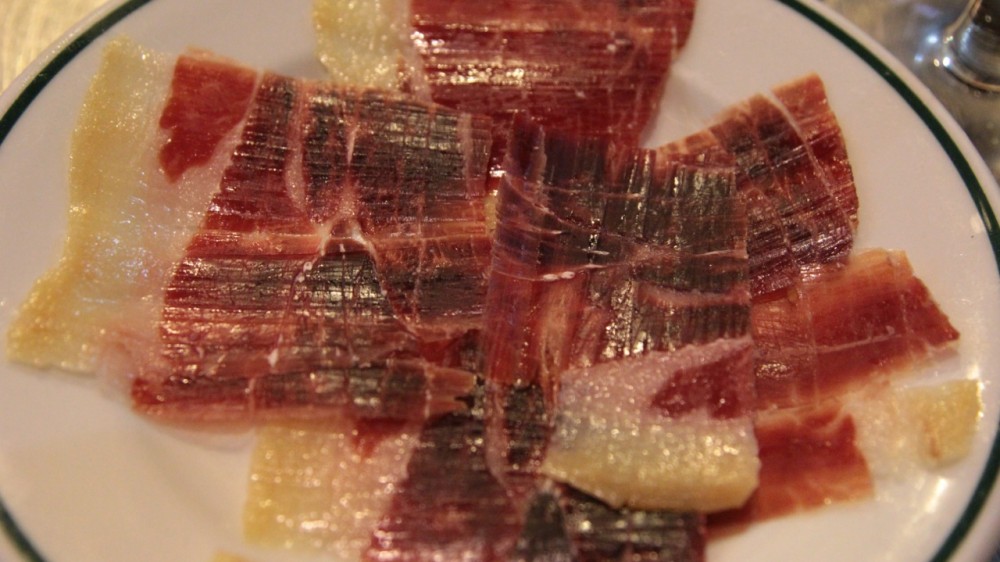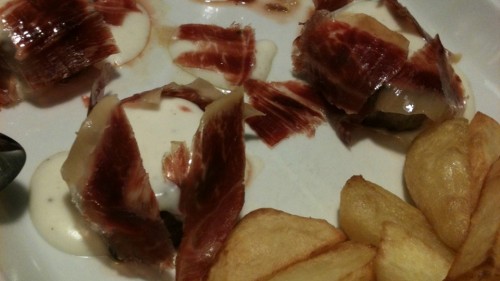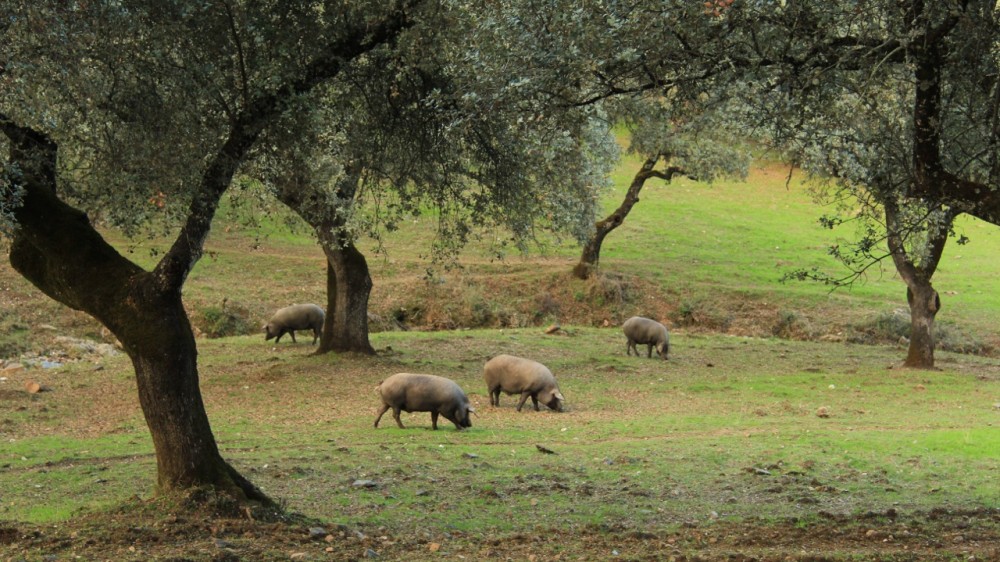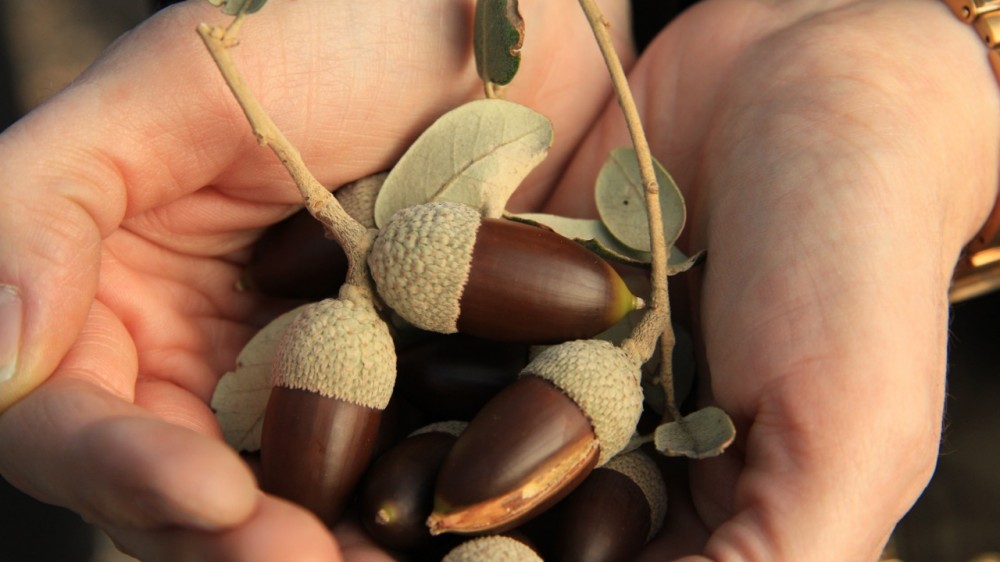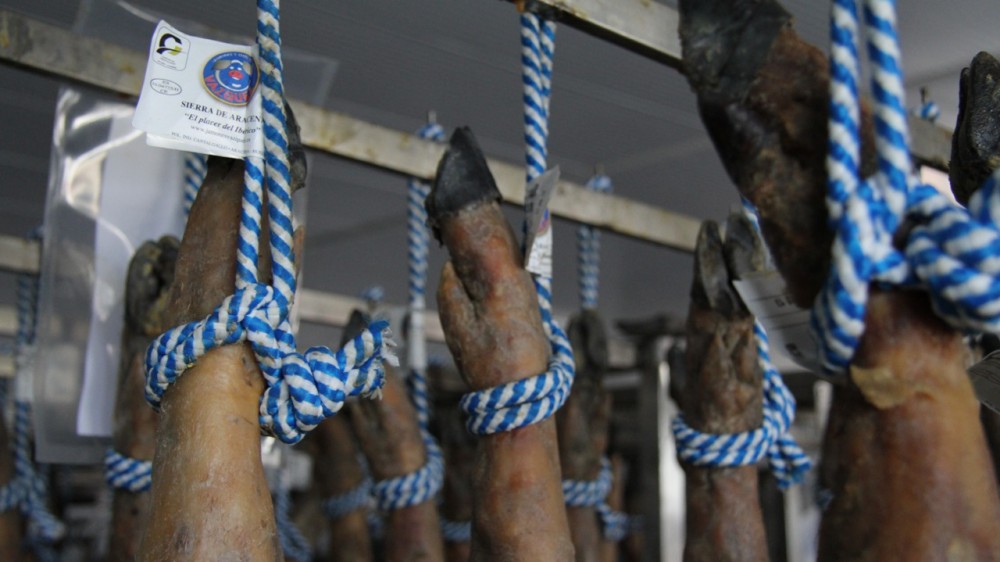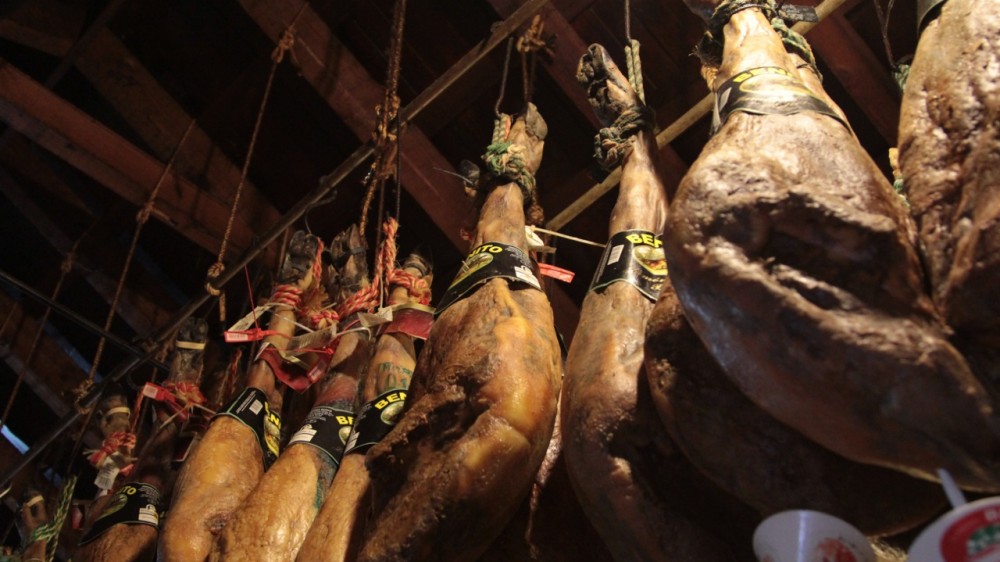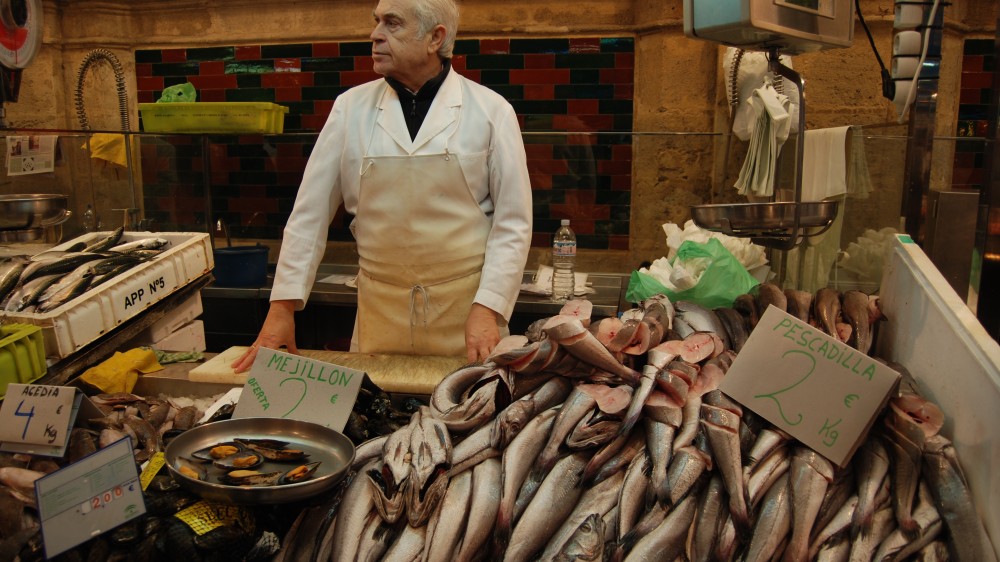Jamon Jamon
Iberian ham, or jamón iberico, might well be our favourite thing about Spain (beyond the Macarena and Rafael Nadal, obviously). If you count yourself a lover of prosciutto or jambon de Beaujolais, jamón iberico will be right up your alley. Read on to hear about jamón’s inglorious history, current prestige and our favourite tasting tips.
Ham wasn’t always such a celebrated item on the Spanish table. In fact, pork was outlawed for some 700 years of Spain’s history when Islamic law ruled the country. This ham-ban was officially lifted when the leadership changed over to the Christians, and then ham was practically mandated a table staple in order to ferret out the remaining Muslims and Jews (who also don’t eat pork for religious reasons) and make them convert or leave town. A dark period in Spanish history ensued, where neighbours were encouraged by the church to spy on one another, looking for signs of heresy (and secret ham abstainers) in their midst. Fairly quickly, public consumption of pork was seen as a harbinger of one’s embrace of the Catholic faith, and as such, the pork industry of Spain was born.
At the same time that ham was gaining plate space on every Spaniard’s table, eating Iberian pork became synonymous with nobility and distinction, due to the fact that only aristocratic families could afford the large tracts of meadowland that are required to properly fatten the pigs for butcher.
Thankfully, eating jamón iberico today requires no pledge of faith to anything other than quality standards. Like a fine “Appellation Contrôlée”, jamón enjoys the status of five Denominaciones de Origen: Jamón de Huelva (Andalucía), Dehesa de Extremadura, Gijuelo (Salamanca), Los Pedroches (Cordoba) and Jamón de Teruel. Not all pigs are created equal either: to be considered jamón iberico the pork must come from the black-hoofed Iberian pig (demarcated by the words: jamón de pata negra).
The best of the best though, is the de bellota demarcation, which means the animal has eaten almost nothing but acorns from the native encina oak meadows that spread over large areas of the Spanish countryside. Scientists have analyzed this jamón iberico de bellota and found that the high oleic acid of the acorns they eat finds its way into the streaky fat marbling of the jamón, which results in a ham that actually lowers your cholesterol.
The jamón itself is either a shoulder (paleta) or leg (pierna) cut, and is cured with salt, cool air, and lots and lots of time. The process seals the hams on the outside, protecting it from bacteria and the elements, and the hams age up to four years. Given that a normal Iberian pig needs a year of fattening on sweet acorns, this farm-to-table process makes it so only about 10% of Spain’s total ham production is the prized Iberico de Bellota, a gourmet delicacy worthy of a place alongside champagne, caviar, and yes, truffles. This fact is reflected near $100/pound the jamón can run you.
Your best bets for a taste of jamón iberico de bellota in Spain is at a tapas table (look for ruby red color and fine streaking) or even for breakfast–order a media tostada con jamón iberico y aceite, which is an open face slice of toast with Iberian ham and olive oil. No matter how you consume your jamón, it is vital that it be thinly sliced. In fact, the art of slicing jamón is so important that there are annual competitions in Spain amongst jamón top slicers. Last year’s champion owns a great little shop in Ronda where we love to stock up on picnic supplies for our hikes in the area.
Sebastian got so hungry halfway through this article he went immediately to the neighbourhood bar to get a jamón iberico sandwich so he would have the strength to finish writing this ode to jamón .
